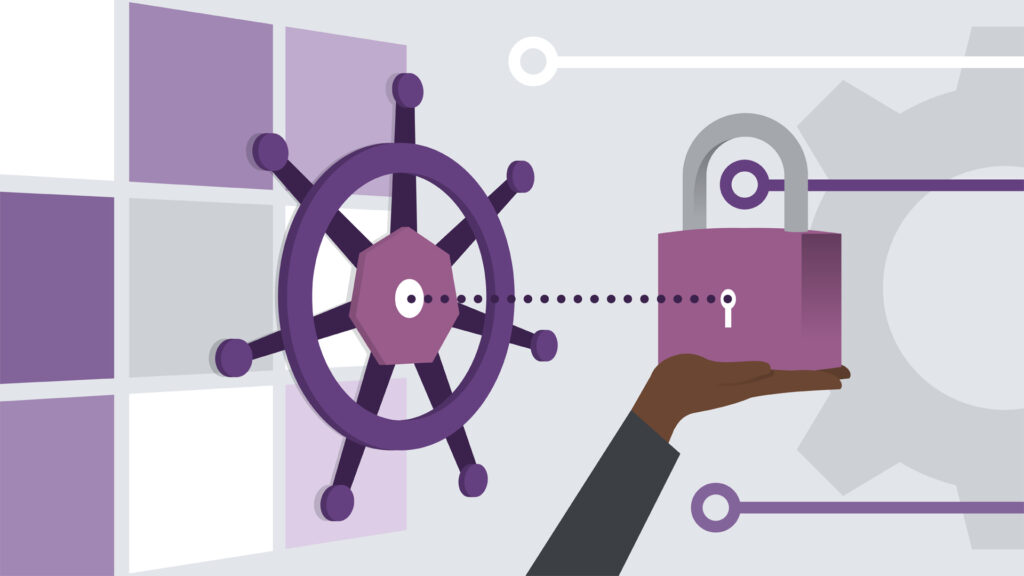Fortifying Your Kubernetes: Strategies for Ensuring Container Security
The adoption of Kubernetes has rapidly grown in recent years, making its security a critical concern for many businesses. As the New York Times reported, Kubernetes security has become a priority for organizations due to the potential risks of cyberattacks on their applications and data.
Kubernetes provides security features such as Role-Based Access Control (RBAC), Pod Security Policies (PSPs), and Network Policies to secure its infrastructure and applications. However, Kubernetes security is complex and requires continuous monitoring and updating to keep up with the latest threats.
The security of Kubernetes is a shared responsibility between the cloud provider, the Kubernetes administrator, and the application developers. With the proper security measures, businesses can reduce the risk of cyber threats and protect their applications and data.
Let’s Learn Kubernetes in-depth.
Kubernetes is an open-source container orchestration system that helps automate the deployment, scaling, and management of containerized applications such as Jenkins, MongoDB, NGINX, and REDIS. With the widespread adoption of Kubernetes, security has become a critical concern. The security of Kubernetes clusters is essential to ensure the safety and reliability of applications running on them.
Use Cases:
Enterprises widely use Kubernetes for their containerized applications, and the security of these applications is of utmost importance. Some use cases of Kubernetes security include
- Access management
- Network security
- Data protection
- Application security
Kubernetes provides security features such as Role-Based Access Control (RBAC), Pod Security Policies (PSPs), and Network Policies to help manage security concerns in these areas.
Pros:
Kubernetes provides a robust security framework that can be customized to meet the unique security requirements of each application. It provides isolation between containers and enables granular access controls, making it easier to enforce security policies.
Kubernetes also integrates with many third-party security tools, making it easy to enhance security measures. Moreover, Kubernetes has a large and active community that continuously develops and improves its security features.
Cons:
Although Kubernetes provides a robust security framework, it can be complex to manage and configure. Improperly configured Kubernetes clusters can create security vulnerabilities that attackers can exploit. Moreover, Kubernetes security is an ongoing process that requires continuous monitoring and updating to ensure security.

Famous Security Practices for Kubernetes
Build-Time Security:
Build-time security involves securing the application and container images during the development process. The development should be done in a secure environment with access controls to prevent unauthorized access. The build tools and processes should be secured, and the images should be scanned for vulnerabilities before being pushed to the registry.
Strengthening Host Operating System:
Strengthening Host operating involves securing the host operating system on which Kubernetes runs. This includes disabling unnecessary services, setting firewalls, applying security patches, and configuring access controls. Kubernetes recommends using a dedicated operating system for hosting Kubernetes clusters to reduce the attack risk.
Container Images:
The base container images used to build application images should be secure and up-to-date. The images should be scanned for vulnerabilities and patched regularly. Container images should be signed and verified to ensure their authenticity.
Security at Deployment:
Deploy-time security involves securing the Kubernetes cluster and the deployed applications. Access controls should be applied to restrict access to sensitive resources. Network security should be implemented to prevent unauthorized access and data exfiltration.
Threat Defense:
Threat defense involves detecting and responding to security threats. Kubernetes provides tools such as Kubernetes Audit, which logs all Kubernetes API requests, and Kubernetes Event, which logs all changes to the state of Kubernetes objects. These logs can be used to detect and investigate security incidents. Kubernetes also integrates with many third-party security tools, making it easy to enhance security measures.
Key Takeaways on the Future and security of Kubernetes Clusters
As the adoption of Kubernetes continues to grow, there will be an increased focus on Kubernetes security. Kubernetes will likely continue to evolve and improve its security features to meet the changing needs of enterprises. Moreover, third-party vendors will continue to develop security tools that integrate with Kubernetes, making it easier to manage and enhance Kubernetes security.
In conclusion, Kubernetes security is a critical concern for businesses worldwide as cyber threats continue to grow in frequency and sophistication. Kubernetes security is essential to ensure the safety and reliability of applications running on it. While Kubernetes provides a robust security framework, it is essential to configure and manage it correctly to reduce the risk of cyber threats.
While Kubernetes offers many benefits, its security is complex, and continuous monitoring and updating are required to keep up with the latest threats. As technology continues to evolve, Kubernetes will likely continue to improve its security features to meet the changing needs of enterprises. For more insightful blogs visit auxin.io







